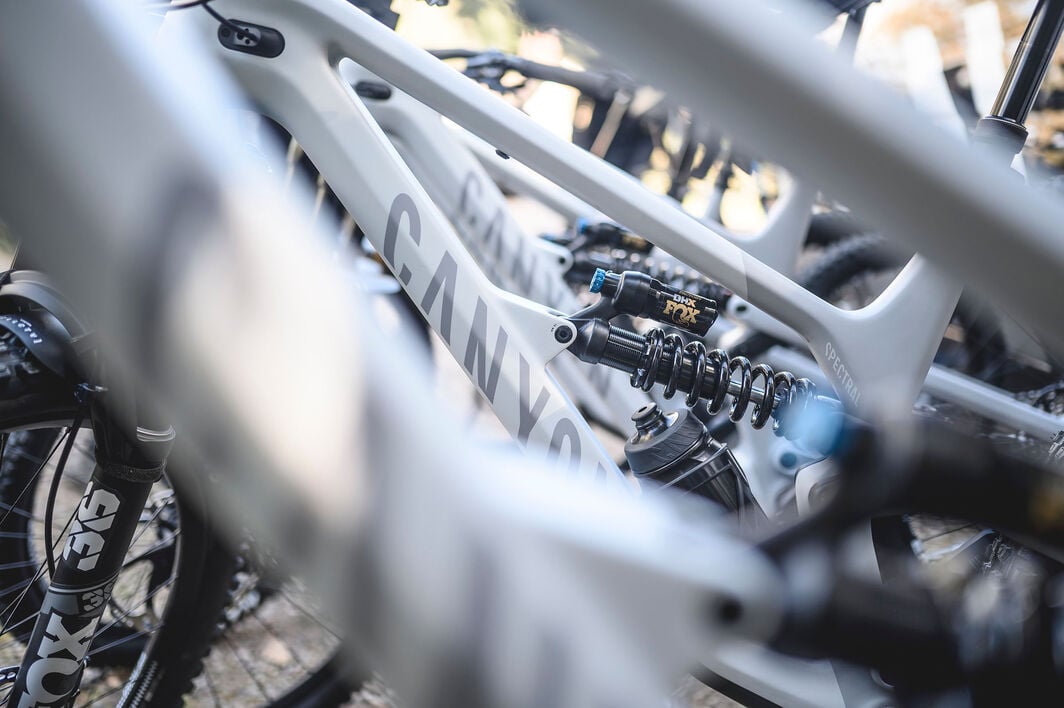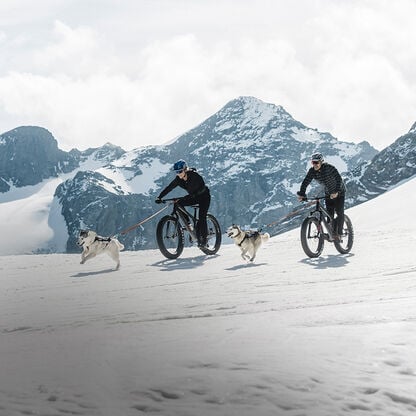Mullet Bike: Pros and Cons
The Mullet bike is growing in popularity in the MTB world. Check out this Canyon guide to the pros and cons of mixed-wheel designs.


For mountain bikers who want to get the most out of their ride, the mixed-wheel bike is rapidly growing in popularity. With a large wheel in front and a smaller one in the back, this innovative design has become known as the ‘Mullet bike’, in reference to the classic mismatched haircut so beloved by hipsters, country music singers, and professional hockey players.
If you’re a newcomer to the sport or a veteran who’s only ridden symmetrical setups, you might be wondering: are mullet bikes good? And is a mullet the right choice for you? Before you decide, take a look at this essential Canyon guide to the pros and cons.

What is a Mullet Bike?
Much like the controversial ‘party in the back, business in the front’ hairdo, the mullet MTB can seem odd, but it has several practical benefits. Dedicated cyclists have been experimenting with mixed-wheel setups for several decades, trying to squeeze as much speed and performance out of their mountain bikes by bringing together the benefits of smaller and larger wheels. However, it took the bike market long to catch up with the trend. The vast majority of mountain bikes were manufactured with a single size for both wheels, and installing different wheels on one of these models was always likely to cause problems, particularly in terms of balance.
The first commercially-available mullet mountain bike, Specialized’s Big Hit, was released in 2004 with a 26-inch front wheel and a 24-inch rear wheel. It sold poorly and was eventually discontinued, as its conventional frame showed many of the same issues that you’d experience if you’d just customised a symmetrical-wheel bike.
Fast forward a decade, and manufacturers were finally starting to figure out the mullet MTB, with models specifically adapted to the mixed-wheel setup. And in 2019, the UCI (Union Cycliste Internationale) changed its rules so that bikes with different wheel sizes were now allowed to participate in official competitions. The success of mullet riders created a buzz in the cycling world, and the mixed-wheel design skyrocketed in popularity.
The most popular versions of the mullet bike tend to feature 29-inch front wheels and 27.5-inch rear wheels. These sizes are both relatively new to mountain biking, and they’re the key to the design’s performance on roads and trails, with just the right amount of diameter variation between them. They’re not the only options available, though. Depending on the manufacturer, you might also find 24-inch and 26-inch mullet wheels. If you want to brush up on your knowledge about mountain bike wheel sizes, take a look at this useful Canyon wheel size guide.

Pros of Mullet Bikes
Control
With a large wheel in front, a mullet bike can tackle rough, rocky ground with minimum fuss. Off-road cyclists with experience will know that a 29er can withstand larger shocks for a gentler ride, and you’ll also have much more control as you navigate the tricky terrain.
Weight
Of course, a drawback of having that big front wheel is that your bike will be noticeably heavier (assuming all the other parts are the same). Mullet mountain bikes can offer the same shock resistance and control with a lower weight due to the smaller back wheel. This lightweight hybrid style reduces drag to move around quicker, which is invaluable for pros trying to shave a few precious seconds off lap or trial times. Newcomers to the sport will also appreciate how much easier it is to lug a lighter bike around when they’re not riding it.
Rear clearance
Another advantage of having a smaller wheel in the back is that it’s a bit further away from you when you ride. This extra rear clearance can be helpful when racing down the steeper trails, making sudden drops easier to handle. Shorter cyclists, in particular, will benefit from this extra distance between their bodies and the rear tyre.
Manoeuvrability
Larger front wheels might improve your steering control, but this often comes at the expense of agility. With a mullet mountain bike, you won’t have to make this trade-off. The mullet MTB’s smaller rear wheels can stick to the inside line more, giving you that extra edge over opponents as they're going around the tightest corners.

Cons of Mullet Bikes
Balance
The mixed-wheel setup means that the mullet bike is fundamentally less balanced than an equivalent symmetrical-wheel version. It’s easy to feel like you’re not properly centred on the bike, which will be a problem on hill climbs. To get the best performance possible, you’ll have to ensure that your mullet MTB is tuned precisely.
Cost
Mullet bikes haven’t been on the market for very long, and the relatively high prices reflect this design as a breakout trend. There’s still a lot less choice than regular symmetrical-wheel bikes, and riders on a lower budget might struggle to find pre-owned mullet MTBs.

Canyon Mullet Bikes
If you’ve decided that you want to try out what the mullet MTB offers, Canyon has some of the best options currently available. Our Spectral CF Mullet model is versatile, bridging the gap between downhill biking thrills and good times at the bike park.
For an even bigger thrill, there’s the Torque Mullet designed for gnarly enduro and downhill trails. There’s also the pro-level Sender CFR mountain bike, which is available in two different mullet options. It has a considerable amount of customisability, allowing you to adapt it to your body and ideal riding conditions.Discover all models.
Mullet Bike Pros and Cons – What You Need to Know
-
Mixed-wheel setup, with the front wheel larger than the back
- Excellent combination of control, agility, and weight
- Balance can sometimes be an issue
- There are a variety of high-performance mullet bikes on the market
Wherever you’re planning to take your mullet bike and however you intend to ride it, Canyon has a design for you. We’ve also got a variety of other models with symmetrical setups, including high-performance mountain bikes, speedy downhill bikes, and long-distance Enduro bikes. Check out our buyer’s guide to find your new favourite model. What sets Canyon apart is that you can buy bike online and it arrives at your doorstep nearly ready to ride. Our bikes come 95% pre-assembled. You can also take advantage of a 30-day return policy, along with a long-term six-year warranty.





Discover our Mountain Bikes
Did this article help?
Thank you for your feedback
















